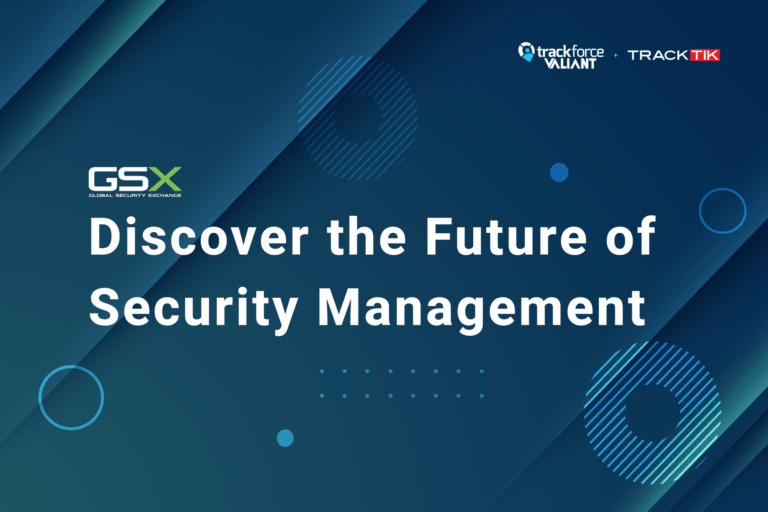Industry evolution is manifesting itself at Industry events as they are converging and have Disruption Districts, Innovation Theaters, Pitch competitions and X learning stages. Software is driving some of the change (more on that later!) as is the hardware world – think IoT, mobility, and handheld devices. The public is onboard as safety is a concern for everyone – think smart cities and public-private partnerships driving crime reduction projects and peace of mind. The change is impacting the industry as a whole but let’s focus on the front line (it is TPSO after all!). Security forces, and the methods used to manage them, have seen transformational changes in the recent decade and we are at the tip of the iceberg.
Just a few years ago, the tools of the trade were a notepad and a pen, and the required technical skills peaked with the ability to use a handheld two-way radio. Guard force security was not viewed in a professional manner; guard jobs were often considered “no specific skills needed” entry-level positions.
That is continuing to change. With the advent of ESRM, security programs are starting to be viewed differently at the corporate level. Enterprise Security Risk Management (ESRM) is a strategic security program management approach that ties an organization’s security practice to its overall mission and goals using globally accepted risk management principles. The role of the security leader in ESRM is to manage security vulnerabilities to enterprise assets in a risk-decision-making partnership with the organization leaders in charge of those assets.
Regardless of the technological innovation, the 5th D of physical security’s 5Ds remains critical. Of course, I am referring to Defense (also referred to as response). Without an appropriate response, you may as well not detect an issue. The security company of the future must adapt to changing customer requirements (read ESRM deliverables), demographic developments, and technological advances if it wants to remain successful.
Consider the following, which may seem minor, but is actually key when it comes to presence. Is the officer where he/she is supposed to be? While this point may seem obvious, it is essentially where deterrence and prevention efforts begin and end. Is the security officer the right one, each and every time? By right one, I mean does the officer have the right skills and attributes to deliver what is expected and specified in a contract and the post and at the right cost? Can they monitor and verify any off-property activity such as unauthorized post departures, or compliance with meal and rest break activity? Are key areas of the facility being regularly inspected? Is too much time being spent in one area, not enough in another area? Do duties reflect the assets identified in the risk register? Are key vulnerable areas being overlooked? Are your guards compliant with post instructions, do they have the skills to be?
The above is very operational, but let’s take a step back and look at the resource delivering the service itself – the security officer. Many traditional industry pains continue to exist, or at least the perception of them do, such as, low pay, inefficiency, low skill requirement, high turnover, low reliability, low-profit margins, and non-scalable management program. A quick look at some stats that reiterate the importance of looking after your security team:
- 25% of people quit in 2018 whereas 77% of those could have been prevented.
- Employers estimate that they spent close to 600B USD$ to cover turnover costs
- Business waste totalled approximately 687B in inefficient administrative work
- Frontline staff lost close to 7% of their wages due to inefficient scheduling
The four bullets above highlight why it is important to review how you manage your frontline staff. Consider how you hire, train, and retain. Do your staffing levels fluctuate? Do you need a short term boost? How can your firm take advantage of the “gig economy” and how do you look at resource deployment?
What about payroll frequency? Access to banked hours and earned wages is obviously an issue (62% of wage earners say flexibility around payday is important to them). Have you considered software offerings around managing some flexibility around that issue? They exist today and offering that to staff you could reduce your turnover numbers and thus offer better service.
What about day in and day out rostering? This function was traditionally viewed in a static fashion – names that are onsite (or should be!) that eventually make up an invoice and a payroll entry. Can it not go beyond that? Consider who gets put on a schedule? How do the officers get offered shifts? What personal profile does the officer have? Can matches be made to support role satisfaction? How does time and attendance get accounted for? How can staff consult their schedules?
In the past it was difficult to be creative–any initiative usually required more unbilled back office manpower, but not so today. You can keep overhead low and integrate a variety of platforms to offer employer of choice type programs. As a business owner, you see net improvements to the bottom lines and client retention. As an employee, you benefit from schedule predictability, access to earned wages, and the ability to pick up adhoc work without having to chase it. As a client, you get better service. A real win / win / win.
When approaching transformation, be sure to consider the people – look across the organisation for who gets impacted, the process – how will you bring about the change and the technology – how does it all tie together. Suggestion – stay far away from stovepipes, not only are they hot, they will burn you in the medium term and you will not take advantage of true automation.
Change should bring about renewed efficiency via automation, better insight and ultimately add value to what you deliver – as an officer and as a business. Yes, the times they are a-changin’ and keeping up with the changes is key to running a successful security business.
To read more about The Professional Security Officer’s “Security & Technology” edition, go to https://theprofessionalsecurityofficer.com/edition-5-physical-security-technology/



